Lourmarin is one of France's most beautiful villages and is located in Provence. With its picturesque scenery, historical attractions and delicious local cuisine, there is plenty to see and do in this charming village. Here is a guide to help you discover all there is to see and do in the village.
Watch this short video on the Luberon!
Why you should visit Lourmarin
Lourmarin is a picturesque village located in the heart of Provence, France. With its narrow cobbled streets, quaint cafes and shops, and stunning views of the surrounding countryside, it's the perfect place to escape from the hustle and bustle of everyday life.
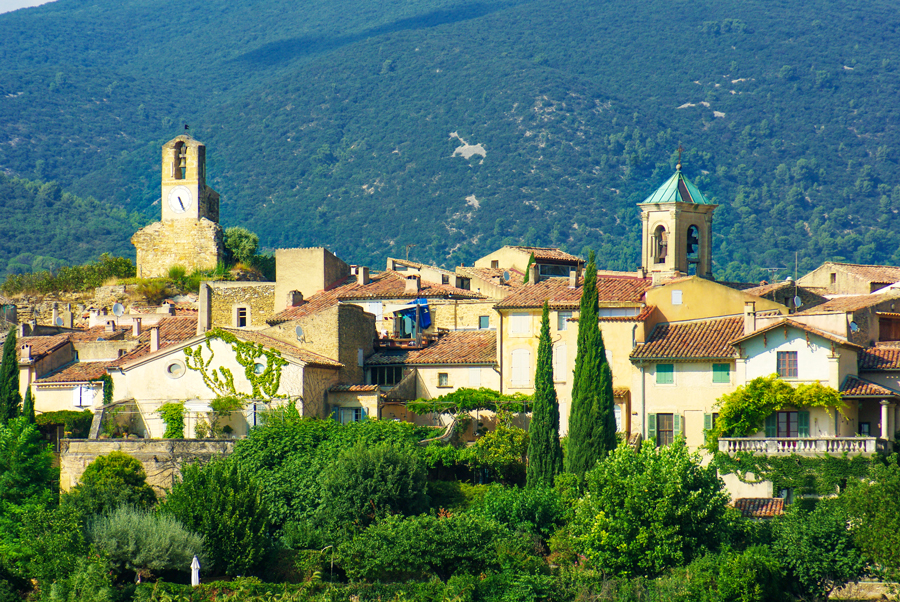
A general view of the village © French Moments
There's something for everyone in Lourmarin, from its historic centre's quiet charm to its nearby markets' vibrant culture.
Visitors can explore the village's impressive chateau, stroll through its lush vineyards, and indulge in the local Provencal cuisine.
With its peaceful setting and proximity to other attractions, such as the nearby city of Aix-en-Provence, Lourmarin is the ideal destination for a relaxing holiday.
Plan your trip
- 🛏 Find the best accommodations in the Luberon on Booking.com
- 🚙 Rent a car in Aix-en-Provence or Marseille-Provence Airport
- 🙋♀️ Get the PASS CÔTE D'AZUR and take your pick from more than 100 amazing experiences!
- 🤩 Visit the beautiful Provençal region of Luberon
- 🚐 Join a 6-hour tour of Lourmarin, Bonnieux, Roussillon, and Gordes by air-conditioned minibus
- 🚘 Discover Provence in a 2CV. Stroll along exceptional roads and enjoy a piece of Luberon all to yourself!
- 🥗 Experience a black truffle hunting tour in a Luberon plantation
- 📚 Get our Guided Walk eBook of Lourmarin!
- 🗺 Download the touristic map of Lourmarin
- 🚻 Public toilets are located at "Traverse du Clos" near Place Henri Barthelemy.
- 🚗 Park at the entrance to the old medieval centre: Avenue Philippe de Girard (coming from Bonnieux), 20 Rue du Grand Pré (Parking Petitou) or by the castle.
- 🛍 A list of shops and restaurants in Lourmarin

Discover Lourmarin
Lourmarin is rightfully acclaimed as one of the most beautiful villages in France (Plus Beaux Villages de France). With a modest population of 1100 inhabitants, this idyllic village is situated approximately 35 km from Aix-en-Provence and 58 km from Avignon.
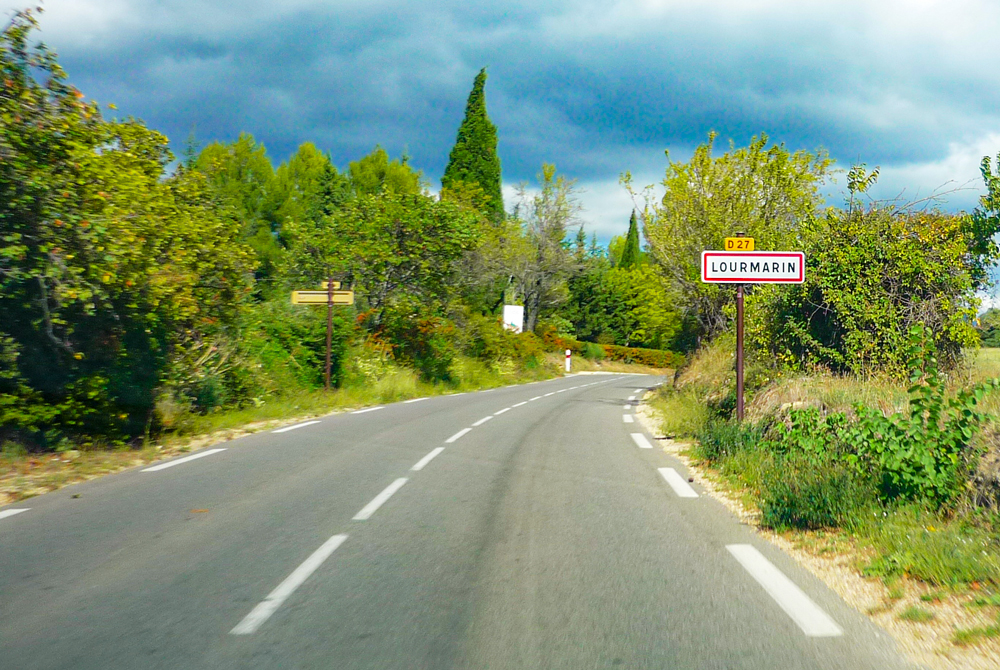
Welcome to Lourmarin! © French Moments
To truly grasp the allure of Lourmarin, a village proudly listed among France's most beautiful, one must venture to this destination and allow its charm to unfold naturally.
Whether approaching from the Combe from Apt or Bonnieux or travelling the road from Lauris, the enchantment begins as you round the final bend.
A road lined with plane trees heralds your arrival, and suddenly, the village emerges—serene and radiant, gently resting on soft hillocks.
Its silhouette, perched atop a small hill, is punctuated by the trio of its bell towers—the belfry, the church, and the temple—and a myriad of small streets that gracefully meander around the village's heart.
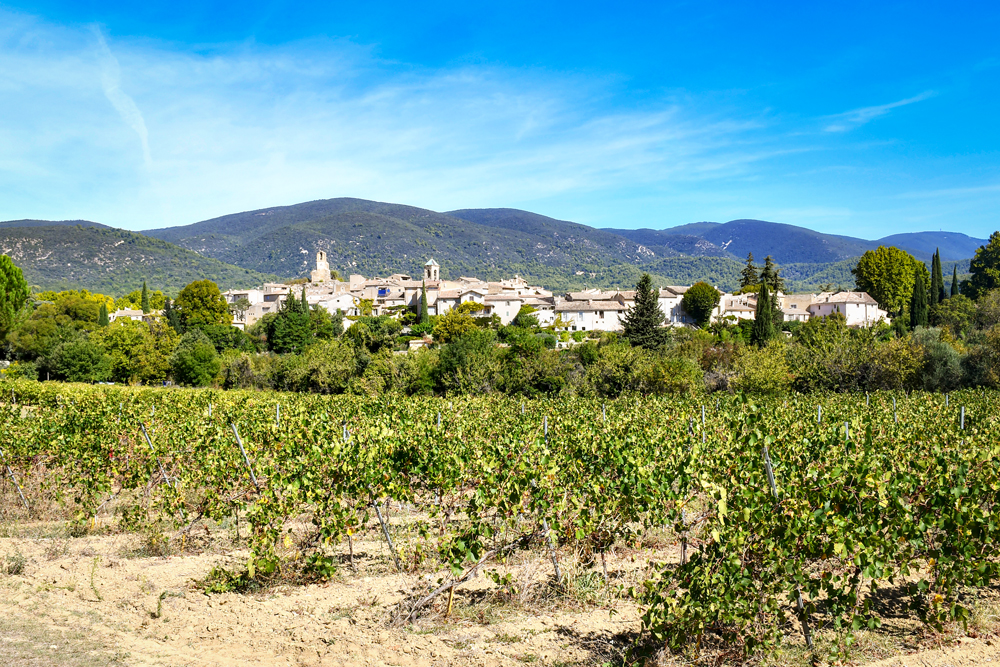
The village from a distance © French Moments
A bit of history
The village of Lourmarin has a rich and colourful history. It has been inhabited since prehistoric times, and archaeologists discovered artefacts from the Bronze Age and Iron Age in the area.
In the Middle Ages
Lourmarin has been a part of Provence's history for centuries. The first written record of Lourmarin dates back to 864 when it was included in the will of the Count of Provence. The village was then transferred to the Count of Forcalquier in 1245. During the 14th century, Lourmarin became a prosperous agricultural centre, exporting wine and olive oil to other parts of Europe.
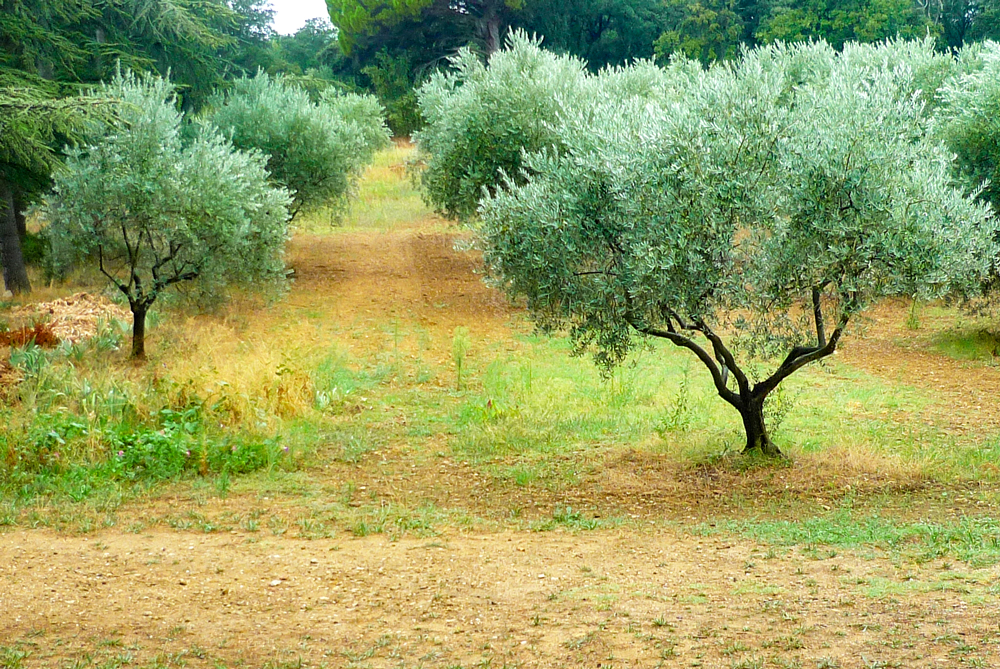
Olive tree groves near the village © French Moments
From the 15th to the 17th centuries
In the 15th century, the powerful Lascaris family took over the village. They built the castle of Lourmarin and transformed the village into an important political centre.
Ramparts surrounded the village in the 16th century, which the French later destroyed during the French Revolution in 1789.
In the 16th century, Lourmarin was a popular stopping point for travellers on the pilgrimage route to Santiago de Compostela in Spain. The village continued to prosper, and by the late 17th century, new buildings had replaced many older houses.
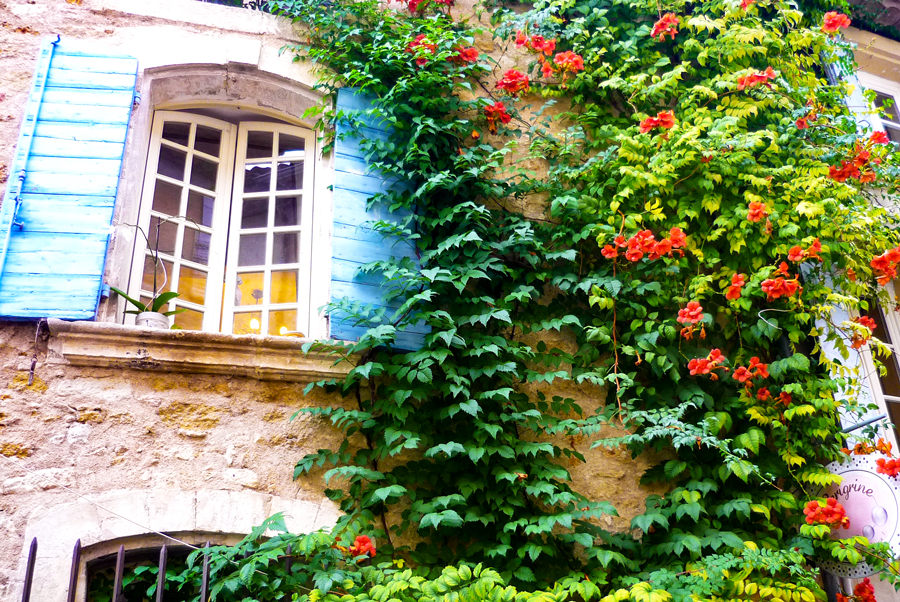
Villas in Provence - In the streets of Lourmarin © French Moments
From Lourmarin to South Africa
In the 17th century, Lourmarin was home to a large Protestant community.
After the revocation of the Edict of Nantes in 1685, some of the Huguenot winegrowers of the village fled to the Netherlands. They then embarked on the ships of the Dutch East India Company for South Africa.
One of these Lourmarin winemakers, Jean Roy, emigrated to South Africa in 1688 and established one of the most famous vineyards in that country today: the L'Ormarins estate in Franschhoek.
The 19th century
During the 19th century, Lourmarin experienced economic decline, as frequent droughts and floods hit the area. In addition, the economic decline of the village was due to to the rise of industrialisation and the introduction of the railway. The village was eventually saved from ruin by a local landowner and philanthropist, Count Henry de Vogüé, who bought up the land around the village and turned it into an agricultural estate.

The Cherry Market circa 1900
The 20th century
In the 20th century, the village of Lourmarin experienced a revival. It became a popular destination for visitors worldwide, including artists, writers, and intellectuals like Jean Giono and André Gide. Albert Camus, wrote his novel “The Plague” in Lourmarin.
The village is now a popular tourist destination, with its charming cobbled streets, picturesque views, and historic architecture. Lourmarin is also home to a vibrant cultural scene, with art galleries, festivals and live music events held throughout the year.

In the streets of Lourmarin © French Moments
Sightseeing in Lourmarin
The village of Lourmarin is known for its stunning natural beauty, with rolling hills, lush vineyards, and beautiful fountains. Visitors can explore the winding pathways of the village, taking in the sights of the ancient stone buildings and the nearby countryside. There are also several outdoor activities to enjoy, including walking and cycling around scenic vineyards and forests, kayaking, and canoeing on the river.

The Three Bell Towers of Lourmarin © French Moments
It is from the Avenue Laurent Vibert that you can see a magnificent view of Lourmarin, perched on a small hill and punctuated by three bell towers (the belfry, the church and the temple). This sight invites us to explore the small streets that wind around the heart of the village.
A historic village
For those interested in history and culture, Lourmarin is a must-see. The village is home to several historical attractions, including the 15th-century Château de Lourmarin, the village's medieval castle and a museum dedicated to the work of author and philosopher Albert Camus. There are also plenty of art galleries and shops to explore, offering unique local art and crafts pieces.
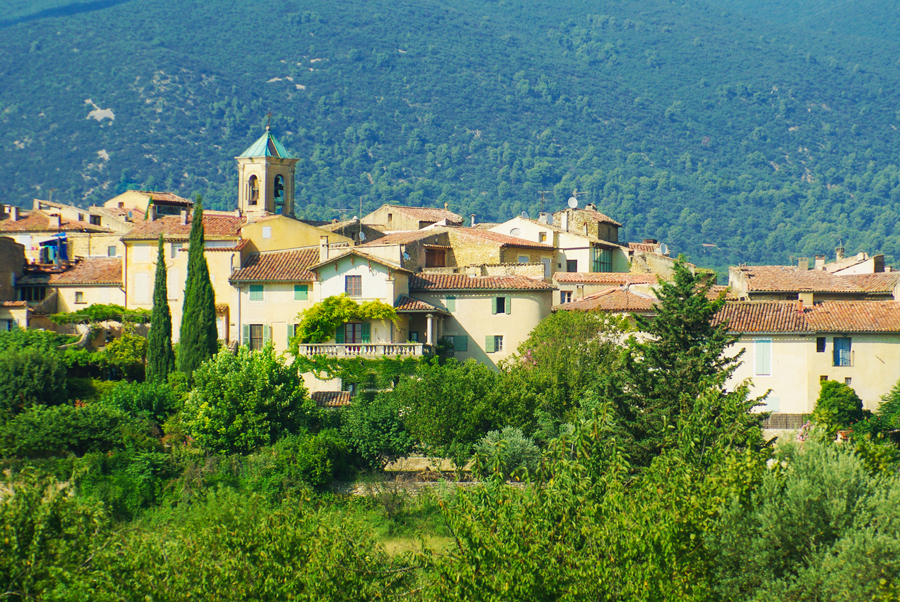
The village from afar © French Moments
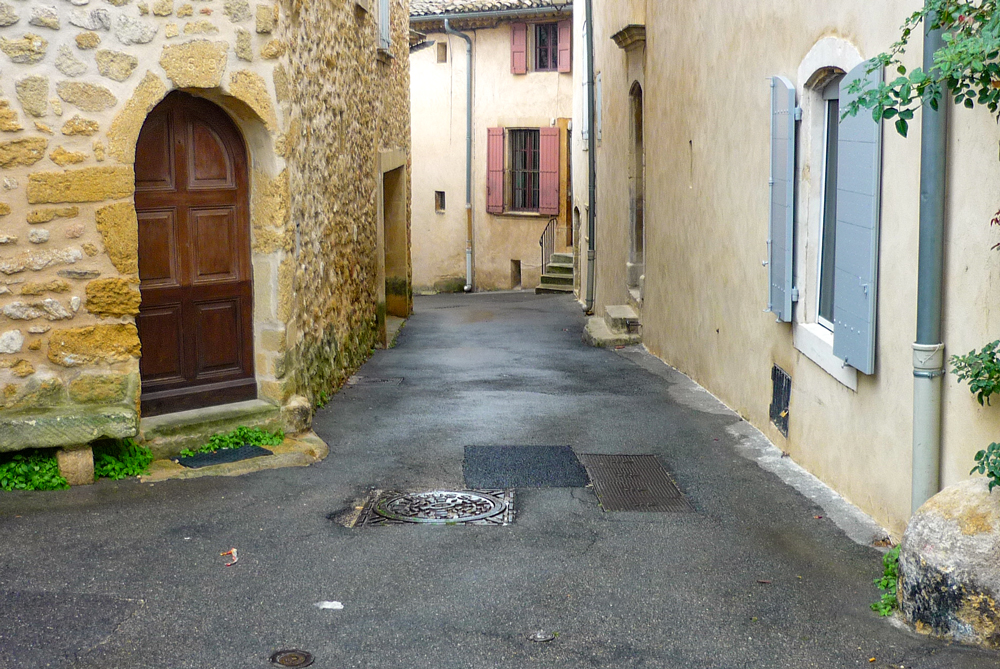
A stroll in the old village © French Moments
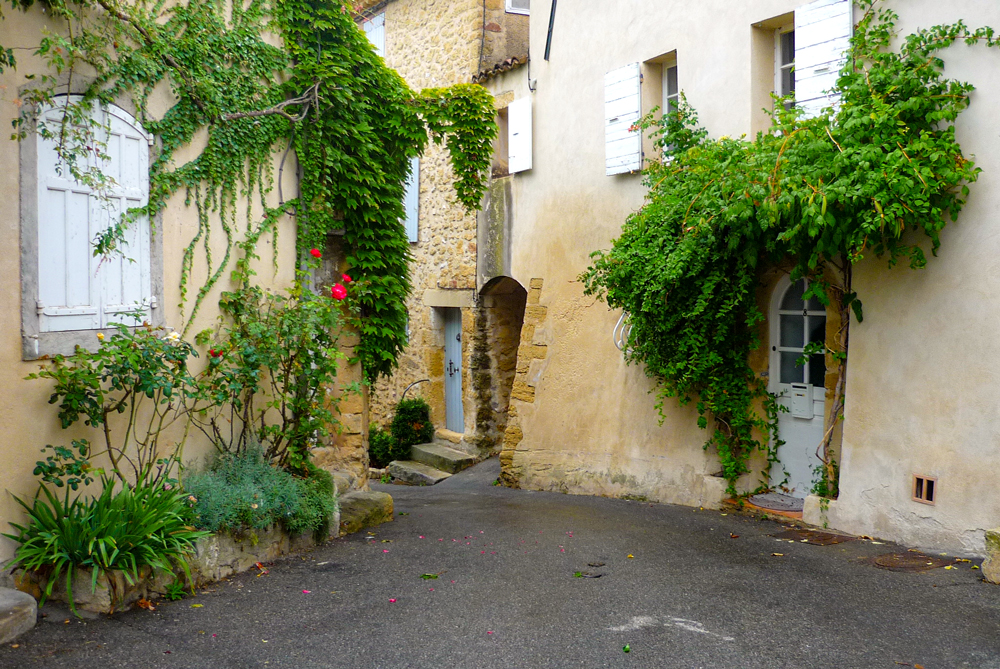
The winding streets of the village © French Moments
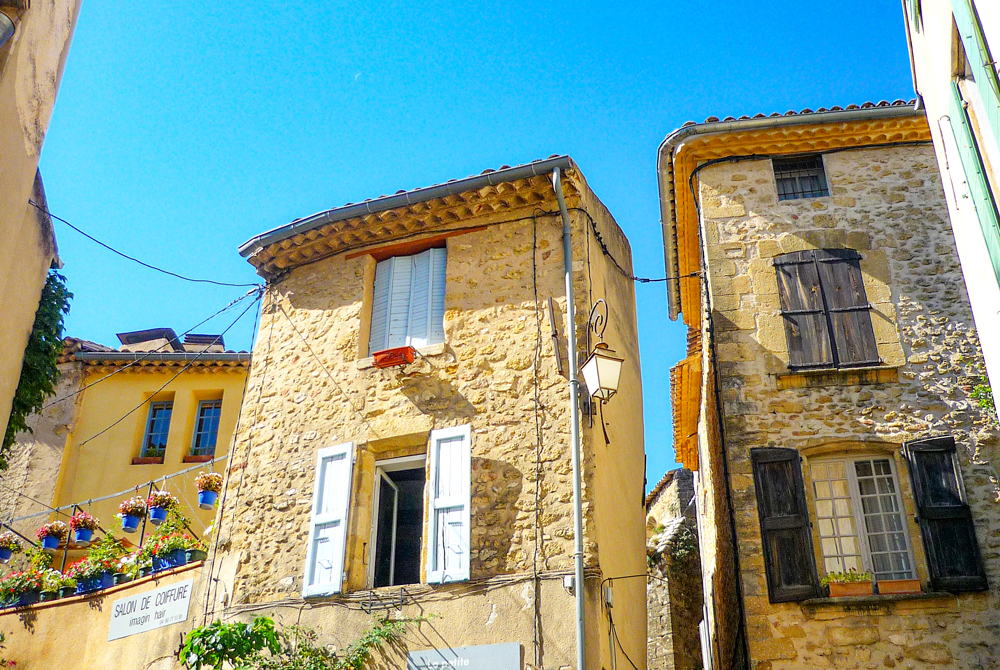
Old houses at the centre of the village © French Moments
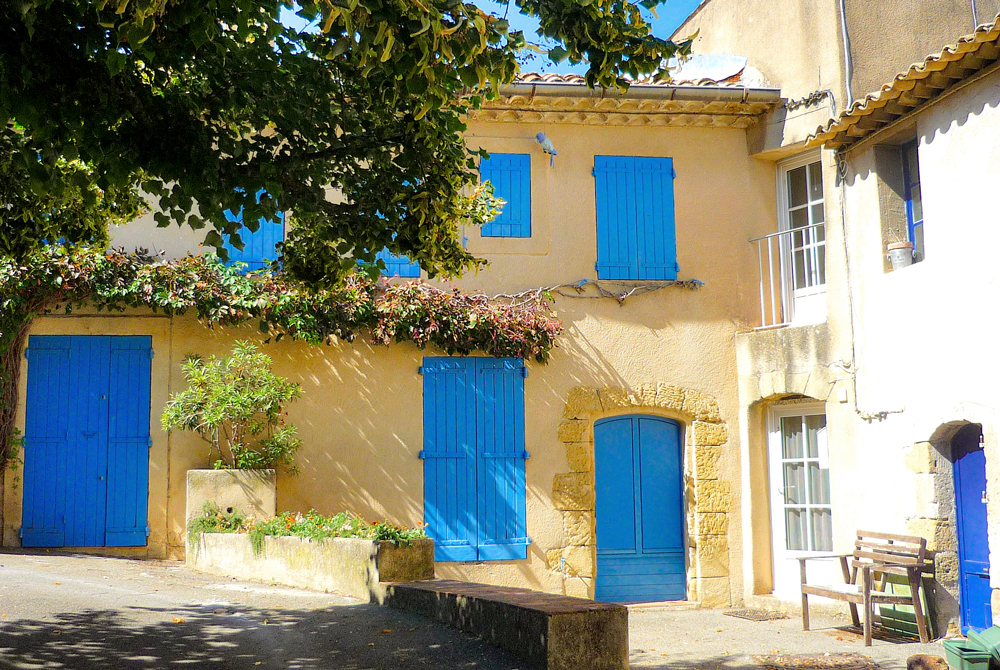
Place du Castellas © French Moments
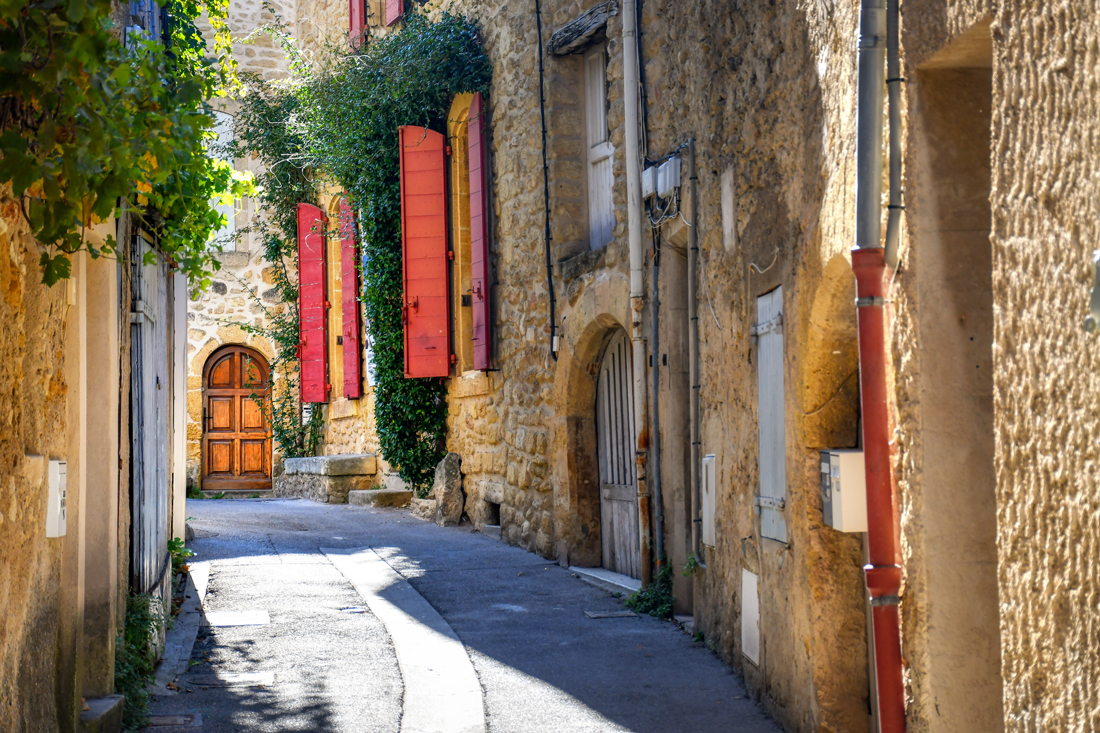
Rue du Coucou © French Moments
The House of Philippe de Girard
This mansion (hôtel particulier) dates from the 18th century and was sold to the commune in 1902. Philippe de Girard was the most illustrious representative of this Lourmarin family.

House of Philippe de Girard © French Moments
The Belfry or the Castellas
The wall-belfry (beffroi) houses the village clock. It dates back to the 17th century and stands on the site of a former seigniorial castle, hence its second name, the castellas. At the time, it was a motte castle, characteristic of the construction of the Middle Ages.
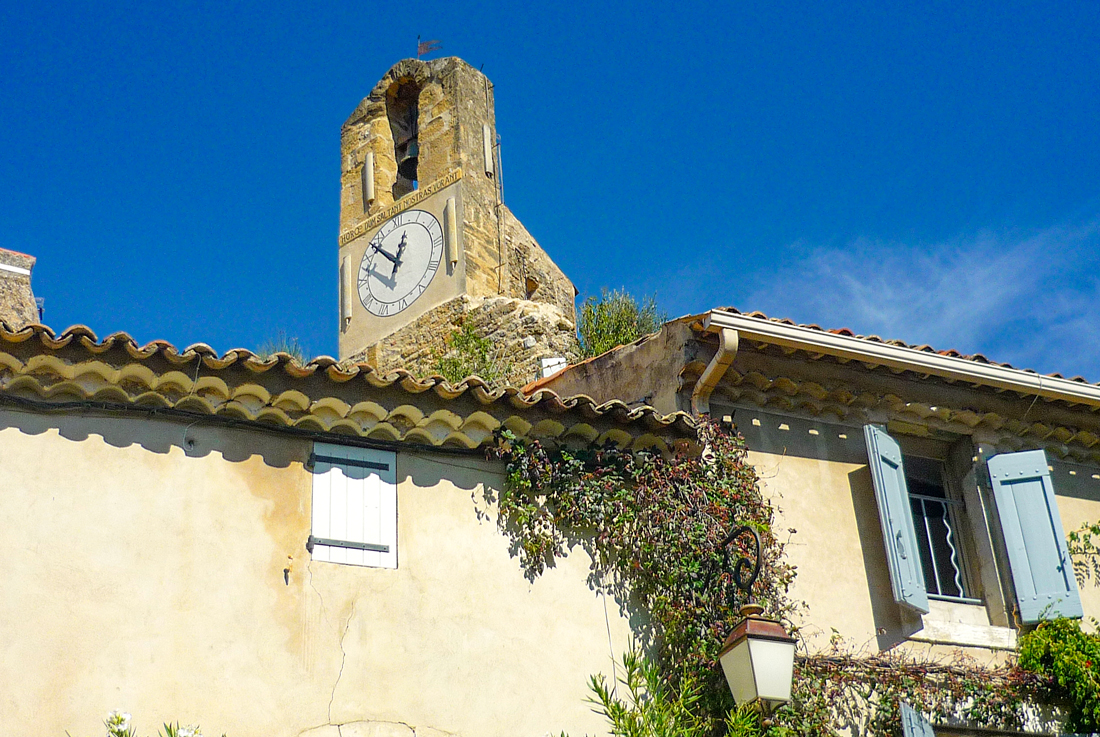
The belfry © French Moments
Eglise Saint-Trophime-Saint-André
At the heart of the village, Saint-Trophime-Saint-André is a beautiful and historic Roman Catholic church in Romanesque style.
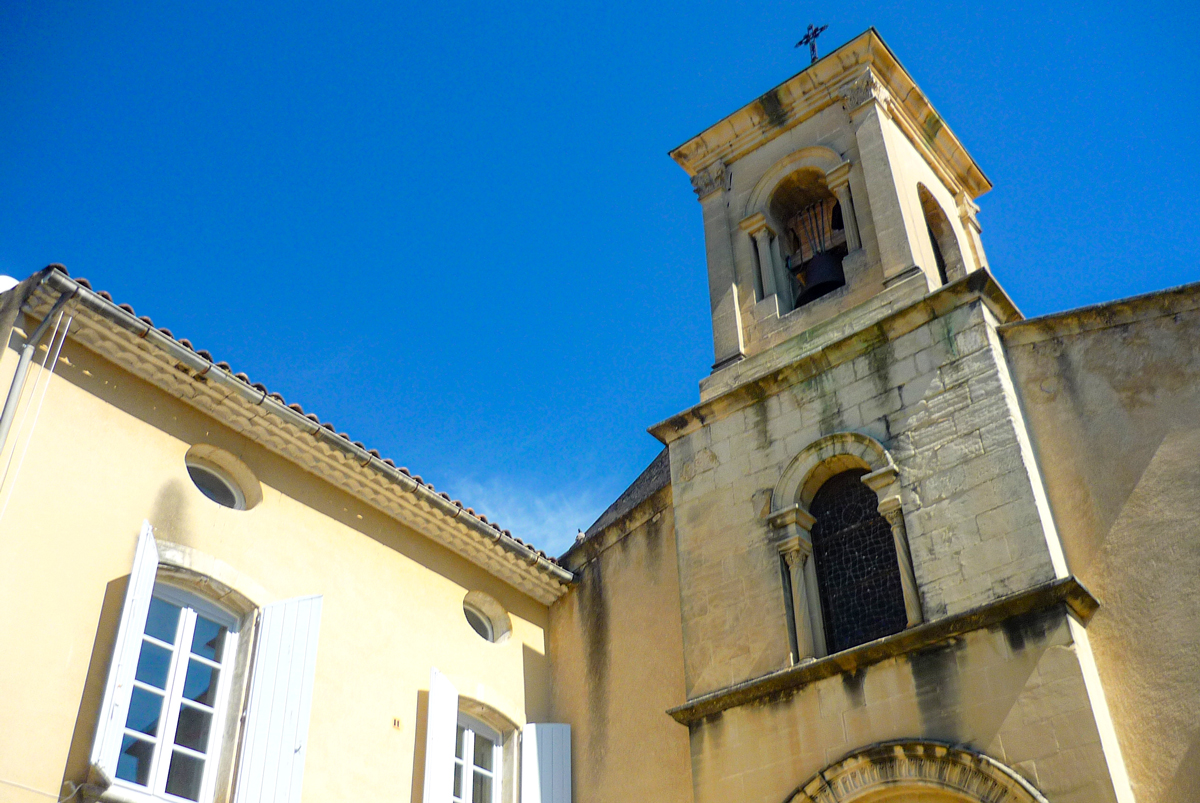
The church © French Moments
The church dates back to the 11th century. It was built shortly before the construction of the castle of Lourmarin (12th century).
It is said that the bell tower was built in 1839 to compete with that of the Protestant temple.
If you can get into the church, head for the "Chapelle du Seigneur" and notice the baptismal font. It has an inverted column capital with a carved animal: a wolf crawling and standing on its paws. This is a reference to the coat of arms of the Agoult-Montauban family, which is part of the coat of arms of Lourmarin.

Inside the church St André-St Trophime © French Moments
The church is open to the public and hosts services throughout the year.
The Protestant church
The Temple protestant of Lourmarin dates from the first half of the 19th century (1806-1818). The Protestant church is rectangular, with a base 12 metres long and 6 metres wide. Inside, the pulpit, located in the apse of the building, is accessible by a double flight of stairs. The bell tower was added in 1849.
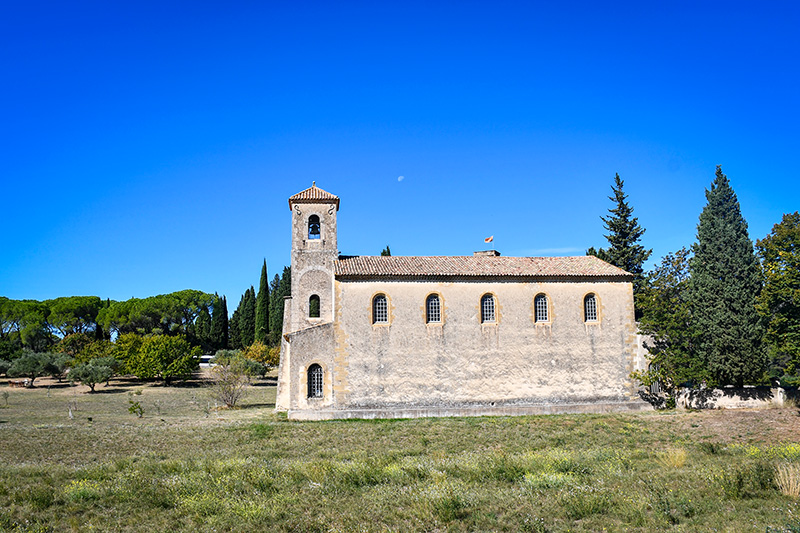
The Protestant Temple © French Moments
From the 15th century, the Protestant population was the majority in Lourmarin. Thus, in the 17th century, the village had only 80 Catholics out of 1300 inhabitants. The Protestant places of worship were clandestine, in the village's centre or the countryside. But the revocation of the Edict of Nantes in 1685 by Louis XIV upset the local demography. It was not until 1806 that Lourmarin welcomed the present Temple. It is the largest Protestant church in the Vaucluse.
The fountains of Lourmarin
Like many villages in Provence, Lourmarin shelters several fountains.
The Fontaine Basse (Lower Fountain) is the oldest fountain in the village. The elders also called it "the Fountain of the Square" (fountain of the square). This was because the area had very narrow streets, where only pedestrians or a small cart could circulate. The slight extension of the road at this point was considered an important square. The fountain was repaired and rebuilt many times between the 17th and 18th centuries.
The Fontaine de la place de l'église on the church square dates from 1849. It consists of a narrow pile, topped by a moulded cornice, crowned by a pyramidal roof. The large water buffet is inspired by ancient architecture. It is decorated in the central part with a lion's head.

Fontaine de la place de l'église © French Moments
The Fontaine Couverte (Covered fountain) dates from the 16th century and was restored in 2010.
The Fontaine aux Trois Masques (Fountain with three masks) is a gift of the Laurent-Vibert Foundation to the village from 1937. You will find this monumental fountain on the Place du Temple, below the castle.

Fontaine aux Trois Masques © French Moments
Observe the grotesque masks. For Henri Bosco, these heads represented the important natural elements of the region:
- the Rhône,
- the Durance
- and the Luberon.
These three heads may also recall three Greek divinities, from left to right:
- Neptune, god of water;
- Apollo, god of beauty;
- and Pan, god of flocks and shepherds.
However, there is no written confirmation of this.
The castle of Lourmarin
The castle of Lourmarin in the Luberon is one of the most impressive and beautiful castles in Provence. Located just outside the historic village centre, this castle has been a source of inspiration for many artists throughout history, including the famous French author, Albert Camus.

The Castle © French Moments
The medieval origins
The castle of Lourmarin was originally built in the 11th century by the Counts of Provence. It was meant to serve as a fortress, providing protection for the people of the surrounding area. Over time, the castle was expanded and eventually became the home of the Counts of Provence in the 15th century.
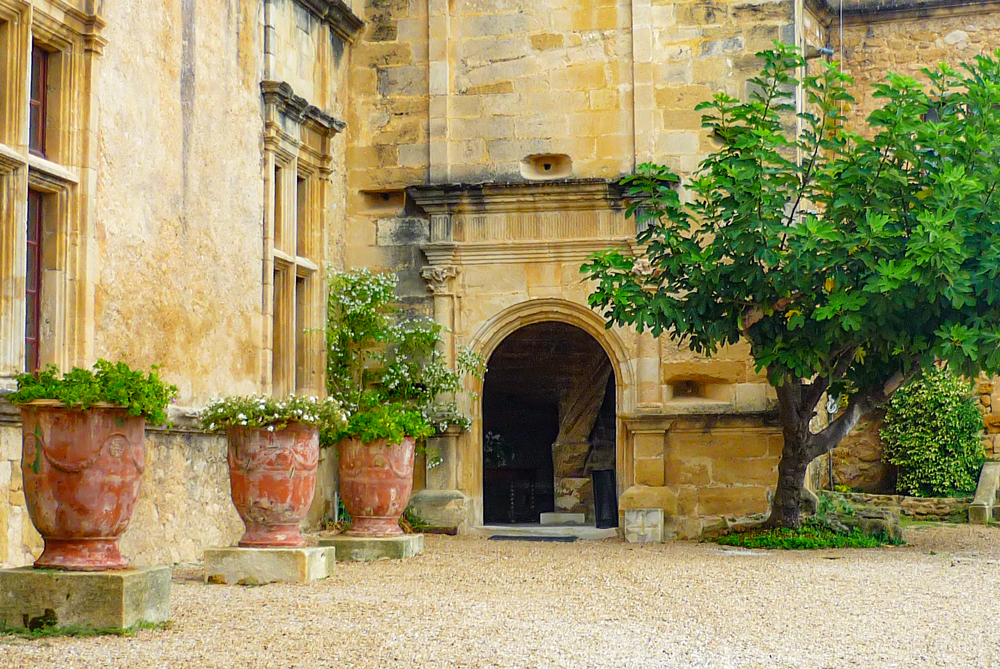
At the castle © French Moments
Rebuilding the castle in the Renaissance style
In the 15th century, during the Renaissance, the castle of Lourmarin was rebuilt by Foulques d'Agoult (member of the most prominent family of the Provençal nobility) on the remains of the old fortress.
It underwent numerous extensions before taking on the appearance of a real palace, inspired by the most sumptuous Italian villas.

The inner courtyard of the castle © French Moments
A grand château
The castle is known for its stunning architecture and its rich history. The iconic building still stands today as a symbol of Provence. Its beauty and grandeur are a testament to the skill and craftsmanship of its builders, and it is a reminder of the power and influence of the Counts of Provence.
Its grand entrance is guarded by two majestic towers, and the walls are made of stone. Inside, visitors will find elegant rooms and exquisite frescoes, as well as a large garden and courtyard. There is also a chapel located on the grounds of the castle, which has been a place of worship for centuries.

The Château circa 1900
Renovation in the 1920s
In 1920, the Lyon industrialist Robert Laurent-Vibert became the owner of the Château de Lourmarin. At the same time, he saved this monument from destruction and undertook major renovation work to restore its soul.
An inspiration for renowned authors
The castle of Lourmarin has been an inspiration for many renowned authors, including Albert Camus. He wrote some of his most famous works while staying in the castle, and it is said that the atmosphere of the castle helped to inspire him.
Today, the castle is still a popular destination for tourists from all over the world who come to admire its beauty and explore its rich history.
Visit the Lourmarin Castle
Nowadays, the castle of Lourmarin is open to the public and has become the scene of several major events, such as the Renaissance festival.
During the high season, several open-air classical music concerts are organised in the castle grounds.
Check out the website of the castle for more info and to organise your visit...
Watch my guided walk of Lourmarin
A 17-minute video that starts at the entrance of Lourmarin and climbs to the old church and Castellas belfry at the top of the village.
Local wines
The vineyards of Lourmarin belong to the Côtes-du-Luberon appellation d'origine contrôlée (AOC). Wines that are not in the AOC can claim, after approval, the label Vin de Pays d'Aigues.
![Côtes du Luberon AOC © Marianne Casamance - licence [CC BY-SA 4.0] from Wikimedia Commons Côtes du Luberon AOC © Marianne Casamance - licence [CC BY-SA 4.0] from Wikimedia Commons](https://frenchmoments.eu/wp-content/uploads/2023/01/Côtes-du-Luberon-AOC-©-Marianne-Casamance-licence-CC-BY-SA-4.0-from-Wikimedia-Commons-scaled.jpg)
Côtes du Luberon AOC © Marianne Casamance - licence [CC BY-SA 4.0] from Wikimedia Commons
Food in Lourmarin
Regarding food, Lourmarin is known for its delicious Provençal cuisine. Visitors can sample local specialties such as gibassier (or gibassié), a famous bakery speciality made with olive oil).

A Gibassié © French Moments
Many restaurants and cafés also serve traditional dishes and local wines.
Click here for a list of some of the best restaurants in Lourmarin.
The Provençal market of Lourmarin
A visit to Lourmarin would only be complete with a visit to one of the many local markets. The village is home to a weekly market (one of the largest in the Vaucluse), where visitors can find fresh produce and Provençal delicacies.

The Provençal market © French Moments
Thanks to the quality of its products, the unique variety of its exhibitors and its exceptional setting in a village steeped in history, the Lourmarin market is an unmissable event every week.
You will find up to 150 traders and craftsmen from the region presenting their local products.

"I'm still at the café! Ring here to call me. No answer? Ring here!"

The Provençal market © French Moments
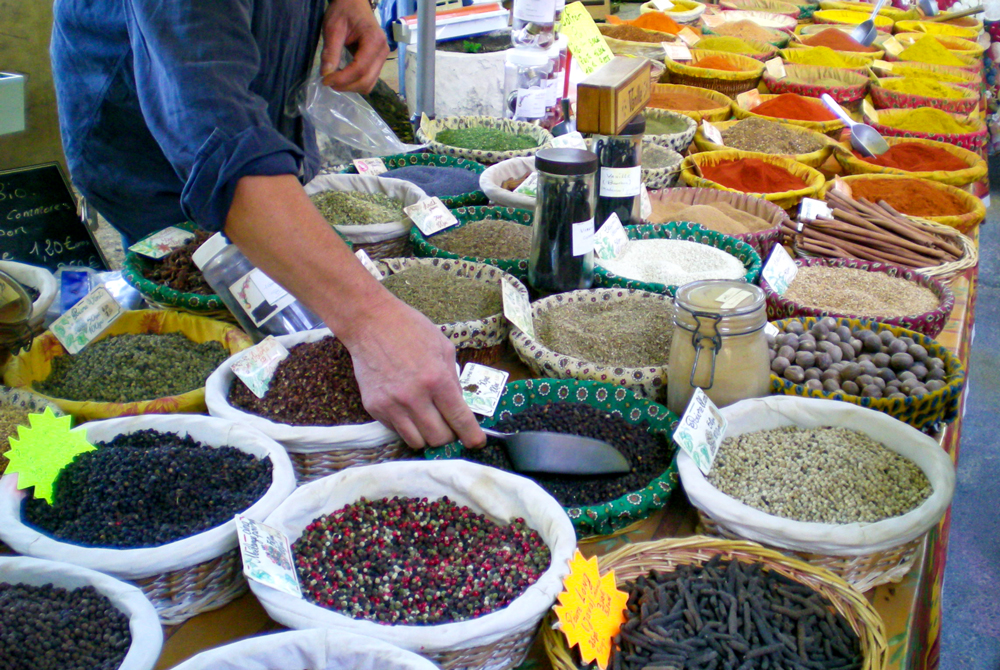
At the market © French Moments
The market takes place every Friday from 8 am to 1 pm on the Place Henri Barthélémy and Boulevard du Rayol.
There are also craft and flea markets offering a variety of handmade items and vintage finds.

Find out more
Here are some pages from our blog and other websites to find out more about this Provencal destination.
- Discover the hilltop villages of the Luberon
- Find out more about Provence-Alpes-Côte d'Azur
- The official tourist office of the area
- Watch our guided walk in the village on YouTube
- Get our guided walk ebook
- Click here to book your accommodation in the Luberon or browse the map below:
Shops and restaurants in Lourmarin
Here is a list of shops and restaurants in Lourmarin. Please note that this list is indicative and may change over time.
Shops and amenities in Lourmarin
What you need to know about the opening hours of shops in the Luberon:
The opening hours of shops in the Luberon are generally very variable and depend on the individual shops. However, most shops generally open between 9am and 7pm from Monday to Saturday.
Shops are generally closed on Sundays and public holidays. Some shops may be open on Sundays and public holidays, but these hours may be limited.
It is best to check the opening hours of individual shops before visiting the Luberon.
Boulangeries hours
Bakery hours vary according to their location in the Luberon. Most bakeries open early in the morning and close between noon and 1.30pm. Most bakeries open their doors on Sunday mornings for customers who want to buy fresh products for breakfast or for entertaining their guests.
Boulangerie Riquier (bakery)
Avenue du 8 mai 1945 + 8 Rue Henri de Savornin - Closed on Monday - website
Boucherie de Lourmarin (butchery)
Les halles du petit moulin,
8 mai 1945, route d'Apt - Closed on Monday - website
Moulin Dauphin (deli, olive oil, souvenirs, craft)
Place Henri Barthélémy - Closed on Sunday and Monday - website
De la cuisine au 20 (deli and grocery store)
20 Rue du Temple - website
Super Taf 2 (grocery store)
42 Avenue Philippe de Girard
Supérette - Vival (convenience store)
Place du clos - website
Maison de la Presse (newsagent and souvenirs)
Place Henri Barthélémy - Open every day
Le Mistouflon (souvenirs and craft)
9 Rue Henri de Savornin - Open every day - website
Pharmacie (pharmacy)
Route d'Apt - Closed on Sunday
Agence postale (post office)
Place Henri Barthélémy (in the premises of the Maison de la Presse) - website
Médiathèque (library and media centre)
Place Henri Barthélémy - Access to the media library and consultation of documents on site are free. However, to borrow documents from home, you need a subscription. website
Les caves du château (wine shop)
Château de Lourmarin, Avenue Raoul Dautry - Closed on Monday
Les caves de la Mère Germaine (wine shop)
7 rue Henri de Savornin
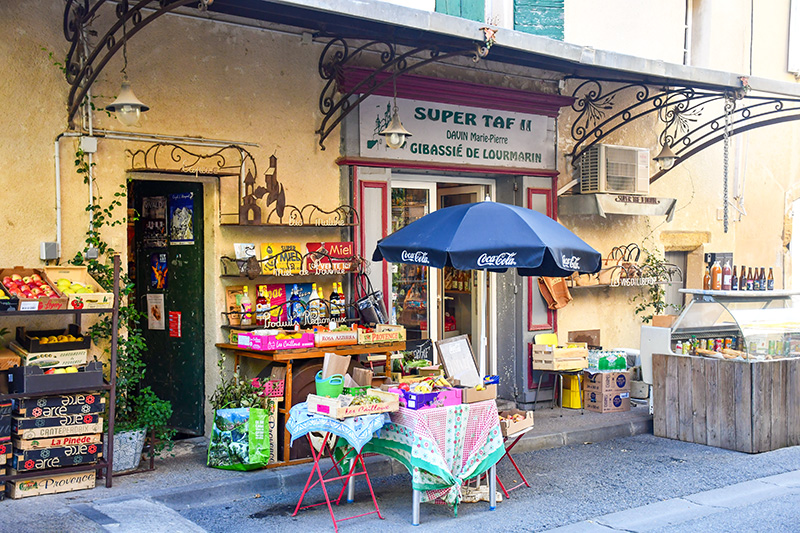
Shop on Avenue Philippe de Girard © French Moments
Restaurants and cafés in Lourmarin
What you need to know about restaurant opening hours in the Luberon:
Restaurants in the Luberon are generally open every day of the week, from 11am to 2pm and from 6pm to 10pm.
Opening and closing times may vary depending on the season and the restaurant.
Some restaurants may close later on Friday and Saturday evenings or open for lunch on Sunday.
Please check the opening hours with the restaurant before you visit.
You will find most of the cafés-restaurants in the Place Henri Barthélémy area.
Le Café de l'Ormeau (restaurant)
2 Place de l'Ormeau - website
L'Arôme (Ice-cream)
Place Henri Barthélémy - facebook
Café Gabi (restaurant)
Place de l'Ormeau - facebook
Pizzeria Nonni (restaurant)
2 Rue Albert Camus - facebook
La Récréation (restaurant)
15 Rue Philippe de Girard - facebook
Brasserie L'Insolite (restaurant)
Place de la Fontaine - website
Le Comptoir (restaurant and tea room)
Place Henry Barthélémy - facebook
Le Club (restaurant)
Quartier Les Ferrailles - facebook
La Maison Café (Café and Restaurant)
1 Montée du Galinier - facebook
La Réserve (Restaurant)
Place Henry Barthélémy

Café in Place de l'Ormeau © French Moments
Supermarkets near Lourmarin
Supermarkets and department stores are generally open 7 days a week, but may have reduced hours on Sundays and public holidays.
The nearest supermarkets to Lourmarin:
Super U in Puyvert (4 km / 2.5 mi) - website
Lidl in La Roque d'Anthéron (16 km / 10 mi) - website
E. Leclerc in Apt (20 km / 12 mi) - website
What to do in the Luberon
Be inspired by a list of things to do in the Luberon:
Pin Lourmarin on Pinterest
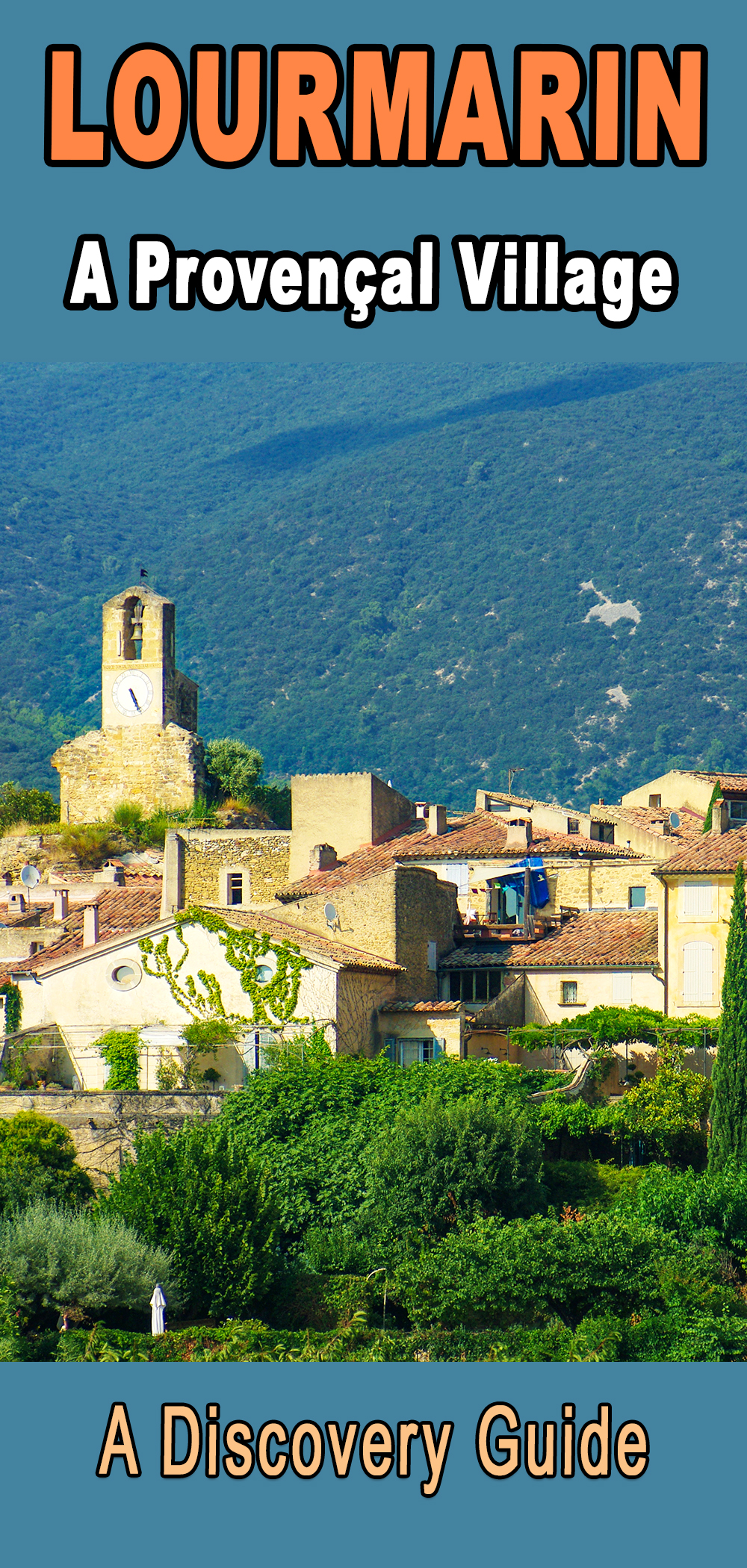

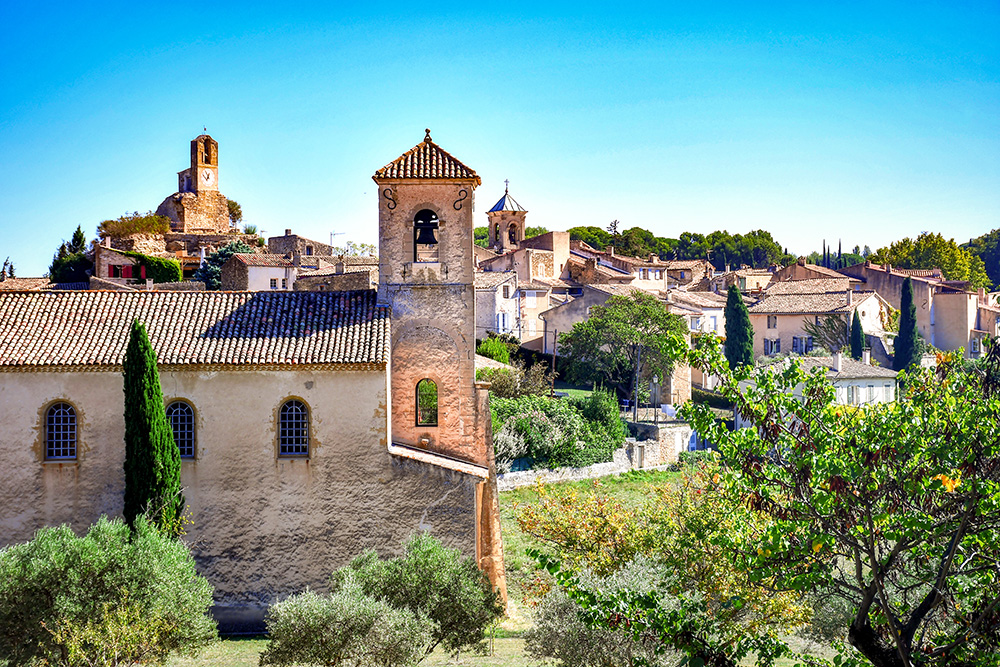






I'm disappointed. The photos (which I expect are stunning like all the other blog posts) are missing! Only the first few (up to the Lourmarin city road sign) show. I've tried twice thinking maybe it's just load time, but they do not ever load. I hope you can find a fix for this. The Luberon was among my favorites from our 2019 trip to France. Thanks for all you do. Your posts are my weekly "fix" for missing France.
Hi Lynn, thank you for your comment. I’ve just fixed the issue and you can now see all the photos in the article! 🙂
Great article, Pierre. This makes me want to rent a car and travel to all the quaint villages in Provence!
Thank you, Ellen! And even better, hiring a Citroën 2CV 😉